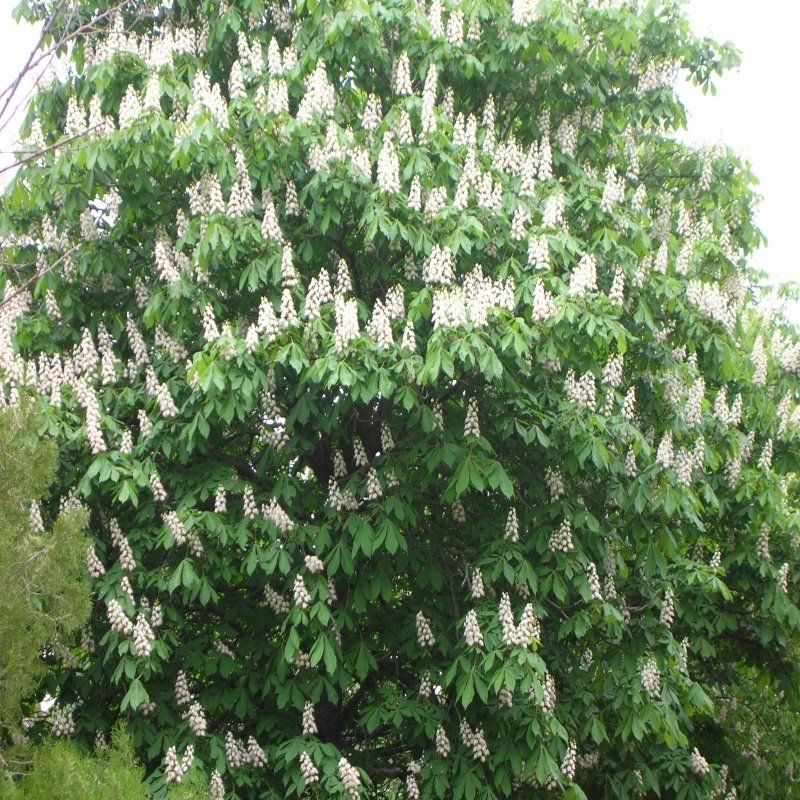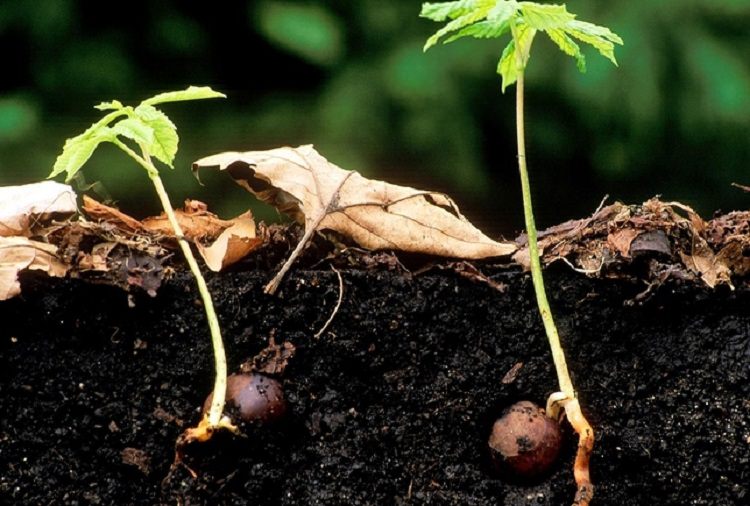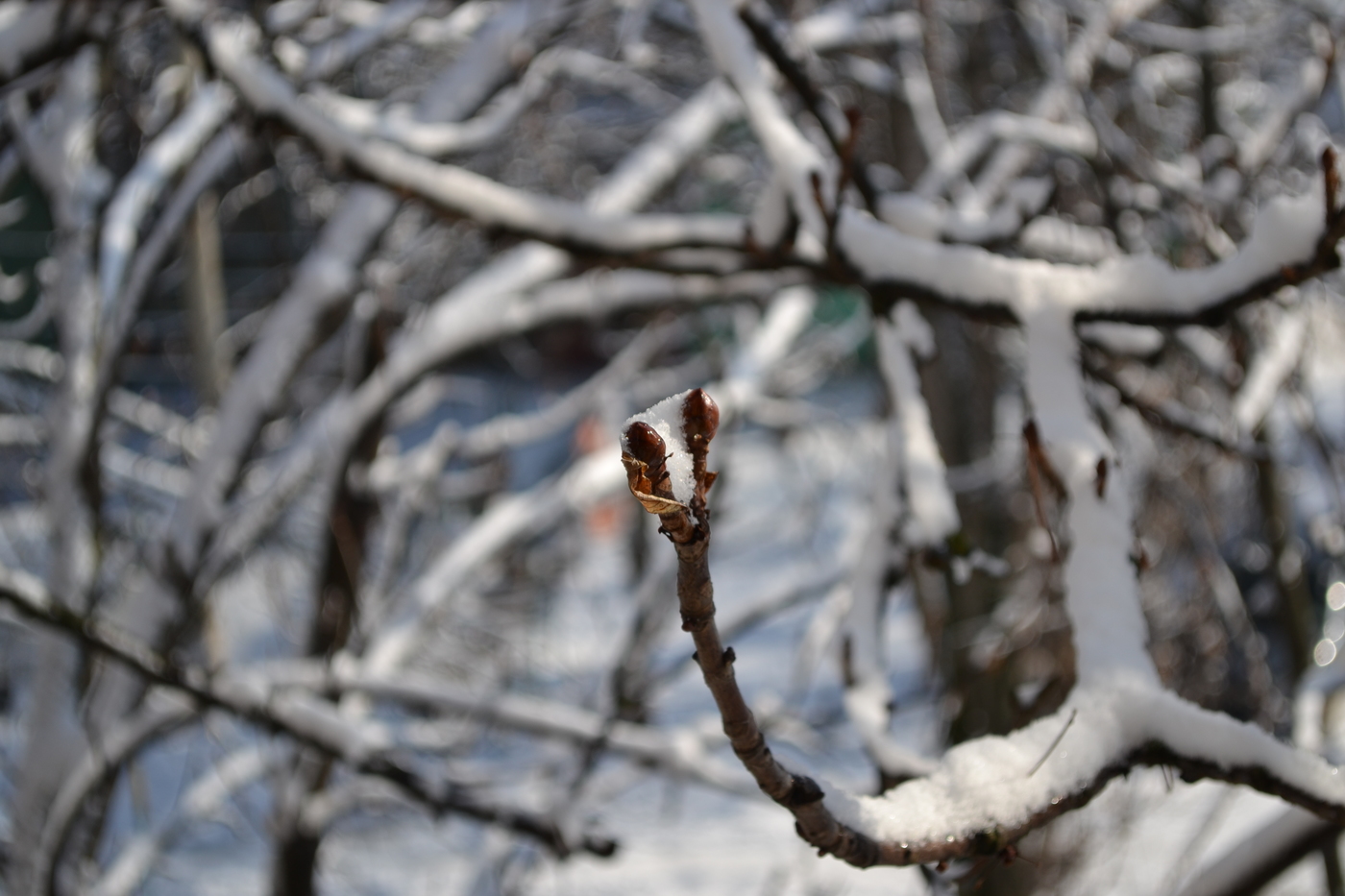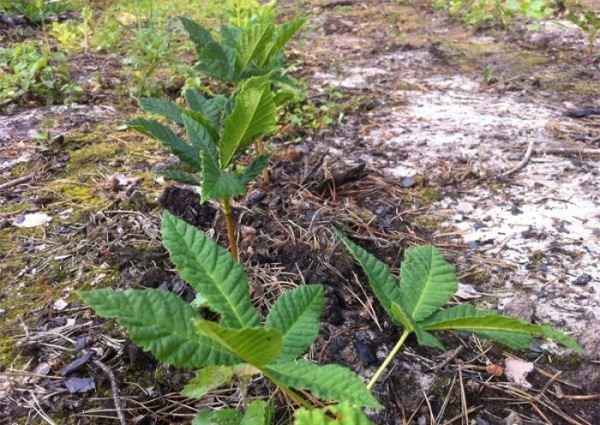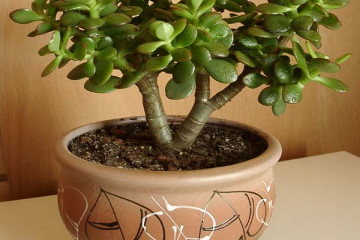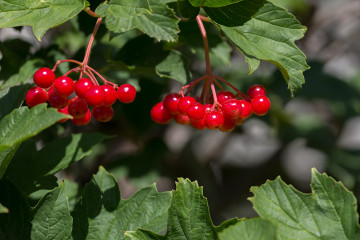Chestnut - a tree with flowers, a description of how to plant and grow
Content:
Chestnut is a tree that is one of the finest in the whole world. It can decorate any area. The peculiarity lies in its flowering. Chestnut flowers will decorate any summer cottage. The article below describes how to plant a chestnut.
What does a garden chestnut look like?
The sight is truly amazing. The description of the chestnut tree says that it is a deciduous decorative specimen from the Beech family. There are many types, for example, red chestnut. It is capable of multiplying with the help of nuts. The height can exceed 50 m. The trunk can be up to 2 m in diameter. The length of the leaf plates is about 20 cm, and its flowers are up to 15 cm. The wood is colored dark brown. The leaves themselves are oval in shape. Like many trees, they are green in summer and turn yellow by autumn.
What strikes the chestnut is its flowers. They are collected in spike inflorescences. These are staminate flowers. Pistillate are found only at the base of the inflorescence. A chestnut begins to bear fruit only 15 years after its planting, but a cultivated one does it 10 years in a row. For the first 5 years, the tree grows rather slowly, but after this period of time the process accelerates. The fruits ripen fully every 2-3 years. These are September and October.
Where grows
Although he is quite resistant to frost, he loves everything warm. It prefers more the climate of the Middle zone, as well as moist soil (and slightly acidic). But it does not tolerate extreme heat either.
Chestnut grows in different places: American on the Atlantic coast of the United States, in the Balkans, the Mediterranean coast, in East Asia, Russia (in the Crimea and the Caucasus). In Europe, the fruit can grow to the size of a whole tangerine. But in Azerbaijan or Armenia, they often reach a small size, no more than a walnut. And how quickly the chestnut grows will be discussed below.
Root system
The root system has its own characteristics. The first is that the size of the crown does not give a full assessment of the picture. It becomes unclear where the roots themselves end. And this is very important if the tree is planted as a neighbor to other plants. The projection of the crown may even be less than the size of the root system itself. In short, next to him, other plants will not be sweet. Powerful and long roots stretch along a large perimeter of the earth. They draw out all the water and other nutrients.
The system itself consists of several parts:
- taproot,
- horizontal,
- first order,
- second order,
- vertical with branches;
- stalk.
Only an adult tree has such a root system. A young seedling has fragile roots. Its taproot reaches only 40 cm in width, and its length differs in height from the ground shoot by 2-3 times.
How to grow chestnuts at home
Everyone probably knows how the chestnut blooms. It is really beautiful and unusual. To observe this in the yard, you can easily grow a tree and at home.
First you need to solve a few questions:
- where to get the necessary seed composition;
- how to properly prepare seeds for stratification;
- what to do before germination.
So how do you get the right seed composition, that is, nuts? In order for the chestnut tree to grow, it is necessary to choose a fruit that is healthy and ready to germinate. There are several criteria for selecting nuts:
- collect only those nuts that have already fallen from the tree, since those that are still growing may be immature, therefore, unfertile;
- the surface of the nut must comply with two postulates: smooth with a smooth structure and dark brown. Without this, he can be susceptible to various kinds of diseases;
- you need to collect more nuts than you intended to plant, since they have poor germination.
How to properly prepare seeds for stratification
After collecting the nuts, they must be prepared for future planting. A few manipulations with the seeds will help to achieve the best possible result:
- The first step is to hold the nuts in damp ground. This will help them cleanse themselves of various fungi, bacteria and other infections. A month before this, the soil should be thermally treated in the oven.
- The soil must be kept in some kind of cold room, this will stimulate the growth of seeds. The main thing is not to keep the nuts in too much cold. This will not only prevent the seeds from growing, but will simply destroy all processes taking place in the ground.
- Next comes the preparation of a special mixture. You need to mix forest soil and humus in a 1: 1 ratio. You need to keep the nuts in this mixture for at least 4 months.
- Shell softening. Without this, it will be difficult for the nut to germinate. To do this, you need to place future seeds in warm water and change it daily. When the top layer of the shell is sufficiently pliable and soft, the chestnut can be considered ready for planting.
What to do before planting walnut chestnuts
The right place to grow the tree also plays an important role. You need to figure out how to plant chestnuts, because unfavorable conditions tend to create unnecessary problems for crops. There are several rules for how to germinate a chestnut:
- keeping seeds in a cold room for several weeks;
- planting in moist soil to avoid various diseases;
- you need to plant at least 5-6 nuts, which should be placed in the dug holes of the earth, since not all will be accepted. The planting depth of the nut is about 5 cm, and the distance between them is 15-20 cm;
- the holes are sprinkled with the same earth, but with the addition of a small amount of river sand.
Care of young seedlings
Chestnut is very difficult to grow, even an experienced gardener does not always cope with this. The main thing here is to strictly adhere to the rules:
- immediately after planting the chestnut, it should be wrapped with wire or some kind of tape around the entire perimeter of the pot, because in the early stages it is very fragile. The slightest awkward movement can be the last for him;
- sometimes it is required to tie up chestnut sprouts;
- abundant watering is necessary in any case. Chestnut loves moist soil;
- the main thing is not to overdo it. An excess of moisture can only harm the plant;
- timely pruning. Chestnut is a leisurely plant, so it will take a long time to grow. It is only necessary to cut off damaged or dried branches occasionally.
On what soil does it grow
Chestnut is known to like well-moisturized soil. That's where it needs to be grown. But moisture is not the only criterion.
Temperature regime
Chestnut is very frost resistant. Its deep root system allows it to tolerate temperatures in almost any harsh climate. Consequently, excessive heat is not well tolerated by the crop. This tree can withstand temperatures up to 25 ⁰C, no more.
A warm room, not too hot, is suitable for young chestnuts for the growing period. And it must also meet some criteria:
- too low a temperature will not bloom. Reproduction will also be impossible;
- although it can withstand low temperatures, even a light cold breeze can greatly harm it;
- chestnut, like other plants, does not tolerate gas pollution. Only clean air is favorable for him.
Watering mode
Chestnut loves moisture and water, and should be watered regularly. For this, settled water at room temperature is suitable. It will give the root system more nutrients to grow. Watering should be done every day in the evenings after sunset.
How to transplant chestnuts into open ground
Transplanting any plant or tree (especially chestnuts) is a very difficult and time-consuming process that requires some knowledge to reduce the damage that can be done to the chestnut. Why is that? The chestnut tree has a very strong trunk with powerful roots, which also makes it difficult to move. This is easiest to do with young trees, because an unformed specimen will tolerate a change of place quite well.
Rules for transplanting seedlings and watering
This is best done during spring or autumn, taking into account some of the nuances:
- temperature difference;
- sharp frosts of the soil;
- warm weather without sudden jumps 20-25 ° С.
All this makes it easier for the tree to endure the entire transplanting process. Step-by-step instructions for the process itself:
- Dig a small hole.
- Extract the chestnut along with the roots.
- Checking the roots for damage or disease.
- Ash processing.
- Planting chestnuts in a new location.
Transplanting a chestnut is a very responsible action with consequences. If the gardener is not confident in his abilities, then this should be entrusted to another professional. And besides, the transplant will affect the chestnut. He will need time to recuperate. And this is a rather long process. It is worth considering the above rules, otherwise flowering will have to wait up to 10 years.
Growing chestnuts is a complex process. It is worth adhering to certain rules, strictly following them. The main thing is to take into account that the tree will grow for a long time, and the first flowering can be seen only after 10 years at best. But if this is not a hindrance for the gardener, then he definitely needs to re-read the article again, since the slightest oversight in care can ruin all many years of efforts in growing a blooming handsome man.
